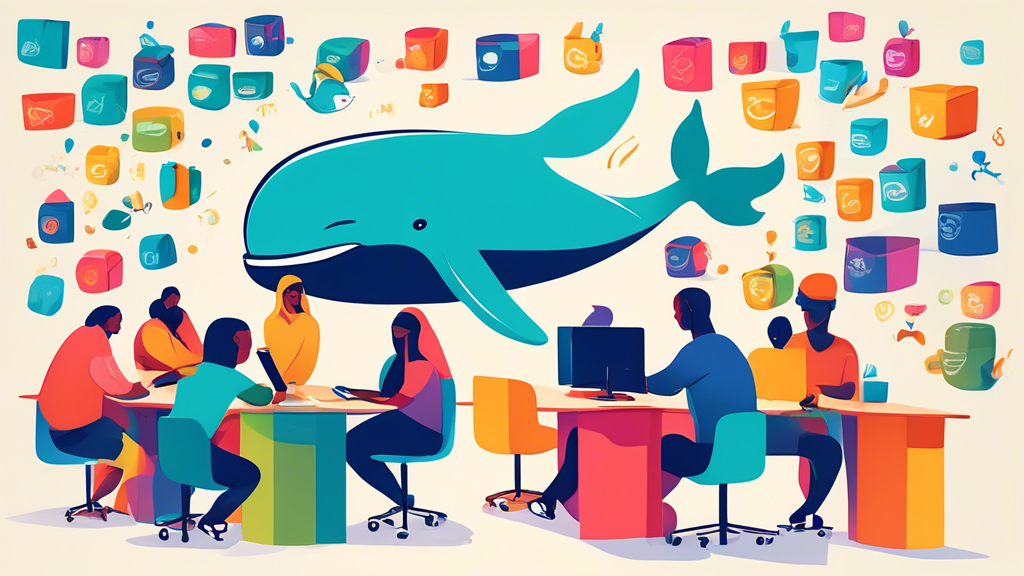Introduction
Stepping into the world of Docker can feel like venturing into a labyrinth of containers and images, especially if you’re new to the concept of containerization. But fear not; this guide aims to be your trusty map, illuminating the path from confusion to mastery. Docker has revolutionized software development and deployment, making it simpler to manage applications across different environments smoothly. By the end of this article, you’ll have a good understanding of Docker, its core concepts, and how you can leverage it to streamline your development processes. And who knows? You might even find it fun—because, as we all know, nothing says ‘party’ like discussing containerization with your friends (or cats, we don’t judge).
What is Docker?
Docker is a powerful platform for developing, shipping, and running applications. By using containers, Docker allows applications to run in isolated environments. These containers are lightweight, portable, and provide everything needed to run the application, ensuring consistency across different environments. You can think of Docker containers as mini-buses that package up your cultural journey across developer environments—seat belts are not required but strongly recommended.
Core Concepts of Docker
1. Images and Containers
At the heart of Docker are two fundamental concepts: images and containers. Docker images are like templates; they are read-only and contain the source code, libraries, dependencies, tools, and other files needed for an application to run. When you run an image, it becomes a container. Containers are running instances of Docker images.
2. Dockerfile
A Dockerfile is a script containing a series of commands and instructions used to create a Docker image. Consider a Dockerfile as the recipe for your application’s container—every chef (developer) should know how to whip this up.
3. Docker Hub
Docker Hub is the GitHub for Docker Images. It’s a cloud repository where you can store and share your container images. You can also find and use images created by others, which can save you a lot of time and effort.
Getting Started with Docker
Now that we’ve introduced the core concepts, it’s time to put your knowledge into action. Starting with Docker doesn’t require you to perform any magic tricks—just some straightforward steps.
Step 1: Installation
First things first, you need to install Docker on your machine. Docker provides desktop applications for Windows, Mac, and a distribution for Linux. Simply download the version compatible with your OS and follow the installation instructions.
Step 2: Running Your First Container
- Open your terminal or command prompt.
- Type
docker run hello-world. - Press enter.
This command pulls the hello-world image from Docker Hub and runs it as a container on your machine, displaying a welcome message. Congratulations, you’ve just run your first container!
Step 3: Creating Your Own Dockerfile
- Create a directory for your project and navigate into it.
- Create a file named
Dockerfilewithout an extension. - Open the
Dockerfilein your preferred text editor and define your application’s environment. - Build your Docker image by running
docker build -t my-application .in your terminal.
Once the build is complete, you can run your application in a Docker container using the docker run command. You’re now not just running containers but making them!
Best Practices for Using Docker
- Keep Your Images Lean: Avoid installing unnecessary packages to keep your images lightweight and efficient.
- Use Multi-Stage Builds: This allows you to build your application in a temporary image and only copy the necessary artifacts to the final image.
- Understand and Leverage the Layer Cache: Docker builds images in layers. Understanding how the cache works can significantly reduce build times and increase efficiency.
- Security: Regularly scan your images for vulnerabilities and update dependencies to maintain security.
Conclusion
Docker is a powerful tool that, with a bit of practice, can dramatically enhance the way you develop, test, and deploy applications. It removes the but it works on my machine dilemma, making your workflow far more reliable and scalable. Like mastering any new tool, obtaining fluency with Docker takes time and effort, but the payoff is substantial. So dock your fears and set sail into the vast ocean of containerization.
Remember, whether you’re looking to streamline development processes or ensure consistent application deployment, mastering Docker can be a game-changer. And, if you ever find yourself in need of web development or container management expertise, remember that your pals over at StarMetaverseGeorgia are more than ready to embark on that journey with you.
Embark on your Docker adventure with confidence, and may your builds be light and your containers sprightly!

Comments are closed